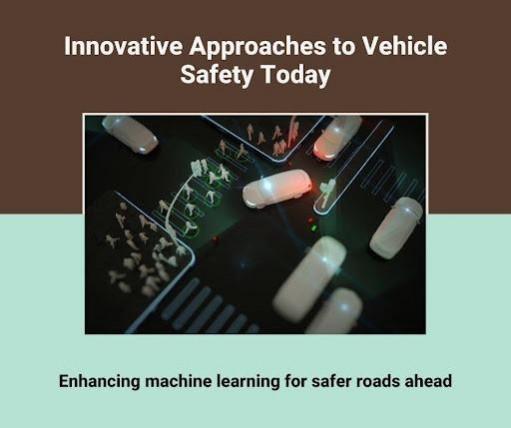
As machine learning (ML) plays an increasingly critical role in developing autonomous vehicles, ensuring their safety and reliability becomes paramount. Experts Govardhan Reddy Kothinti and Spandana Sagam delve into the unique challenges of integrating ML into safety-critical systems like autonomous driving. The focus is on innovative strategies addressing error detection, algorithmic resilience, and current automotive safety standards gaps. Their research offers practical solutions to ensure the reliability of ML-driven systems, contributing to safer autonomous vehicles.
Safe Failure: Robust Error Detection
A key innovation is implementing robust error detection tailored for ML systems' data-driven nature. Unlike traditional automotive software, ML models trained on vast datasets exhibit unpredictable behavior in edge-case scenarios, presenting challenges for ensuring safety in real-world driving conditions.
Govardhan Reddy Kothinti and Spandana Sagam propose a multi-faceted approach to robust error detection, including techniques like uncertainty estimation, selective classification, and out-of-distribution (OOD) detection. These methodologies aim to identify situations where the ML model may falter or encounter unknown conditions.
For example, uncertainty estimation through techniques like deep ensembles or Monte Carlo dropout quantifies the confidence level of the model's predictions. These methods enable fail-safe activation, defer decision-making in high-risk scenarios, and trigger conservative responses, enhancing system resilience and safety.
Expanding Safety Margins: Algorithm Robustness
Enhancing the robustness of ML algorithms is critical to ensuring safe and reliable operation across diverse environments. Autonomous vehicles must handle various driving conditions urban, rural, highway, and varying weather conditions. The challenge lies in ensuring that ML models perform consistently, even when exposed to environmental shifts or corruptions that deviate from training data.
The research emphasizes adversarial domain adaptation, training ML models to generalize across diverse environments by exposing them to adversarially augmented data. Combined with multi-task learning, where models perform related tasks like lane detection and object recognition, this approach enhances robustness and operational safety in unfamiliar conditions.
Incorporating these innovations helps ML models maintain high performance and safety under varying operational conditions, which is a critical requirement for real-world deployment of autonomous vehicles.
Gaps in Current Automotive Safety Standards
Although significant progress has been made, current automotive safety standards, such as ISO 26262, fall short of addressing the specific challenges posed by ML systems in autonomous vehicles. These standards, primarily developed for traditional, rule-based software, do not fully account for the probabilistic and high-dimensional behavior inherent in ML models. Moreover, the opaque nature of deep learning models complicates the validation and verification processes.
New safety frameworks are needed to incorporate formal methods for verifying ML models in critical applications. System-level testing should address ML-specific failure modes, such as adversarial attacks, bias, and overfitting, aligning safety standards with autonomous systems' growing complexity. Additionally, explainable AI (XAI) enhances transparency and accountability, especially in real-time safety-critical decision-making.
Future Directions
The future of ML safety in autonomous vehicles will likely focus on addressing emerging
challenges like adversarial robustness and system transparency. Adversarial attacks, where malicious inputs cause models to fail, pose a significant risk to the reliability of autonomous systems. Research into adversarial defense mechanisms, such as robust training techniques and secure system architectures, is critical to mitigating these risks.
Enhancing explainability is key to building trust in autonomous systems. Models must be interpretable for developers, engineers, and end-users, including passengers and regulators. Transparency in vehicle behavior and limitations is crucial for fostering trust as autonomous technology advances.
This research outlines innovative strategies to enhance the safety and reliability of machine learning in autonomous vehicles. By focusing on robust error detection, improving algorithm resilience, and addressing gaps in current safety standards, Govardhan Reddy Kothinti and Spandana Sagam present a comprehensive roadmap for ensuring ML-driven systems meet the highest safety and reliability standards. As the autonomous vehicle industry advances, these innovations will be critical in realizing safer and more trustworthy autonomous transportation systems.

















